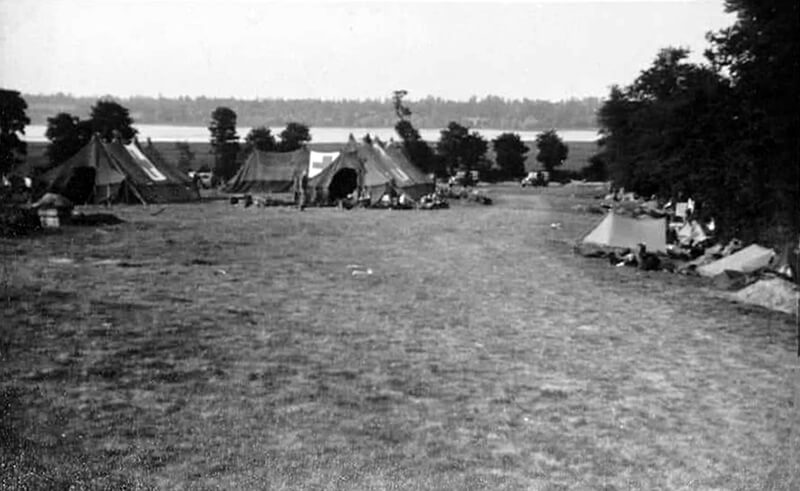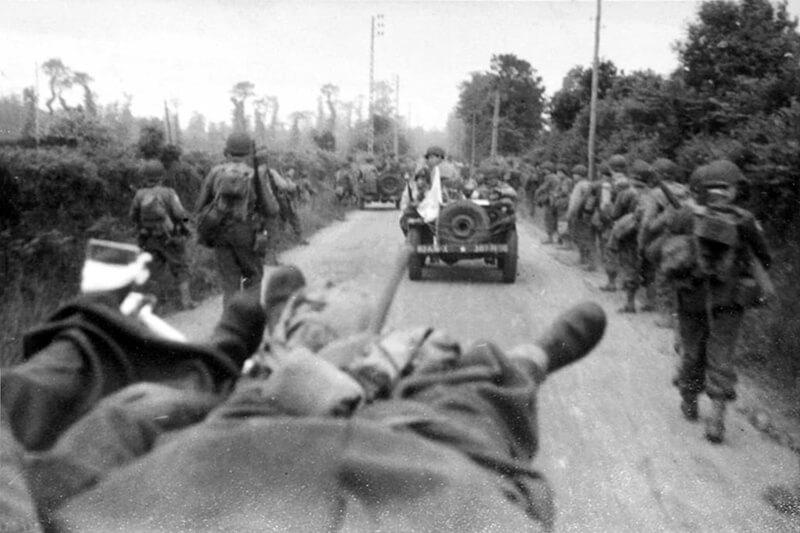| Page Created |
| November 14th, 2023 |
| Last Updated |
| June 22nd, 2024 |
| United States |
 |
| Included Operations |
| Pathfinders Mission Boston Glider mission Detroit Glider Mission Elmira Glider Mission Galveston Glider Mission Hackensack |
| Operational Areas |
| Special Air Service 6th Airborne Division Band Beach Sword Beach Juno Beach Gold Beach Omaha Beach Utah Beach 82nd Airborne Division 101st Airborne Division |
| Operations within Operation Overlord |
| Operation Gambit Operation Neptune Operation Perch Operation Epsom Operation Charnwood Operation Atlantic Operation Goodwood Operation Bluecoat Operation Totalize |
| June 6th, 1944 |
| 82nd Airborne Division |
| Objectives |
- Jump on both sides of the Merderet River west of Sainte-Mère-Église.
- Capture Sainte-Mère-Église.
- Capture two causeways at La Fière and Chef-du-Pont.
- Destroy bridges over the Douve River at Étienville and Beuzeville-la-Bastille.
- Establish a bridgehead west of the Merderet and hold the northwestern flank of the bridgehead.
| Operational Area |
Merderet Sector, Normandy, France
| Unit Force |
- 82nd Airborne Division
- 82nd Airborne Headquarters Company
- 505th Parachute Infantry Regiment
- Regiment Headquarters Company
- Regiment Service Company
- 1st Battalion, 505th Parachute Infantry Regiment
- 2nd Battalion, 505th Parachute Infantry Regiment
- 3rd Battalion, 505th Parachute Infantry Regiment
- 507th Parachute Infantry Regiment
- Regiment Headquarters Company
- Regiment Service Company
- 1st Battalion, 507th Parachute Infantry Regiment
- 2nd Battalion, 507th Parachute Infantry Regiment
- 3rd Battalion, 507th Parachute Infantry Regiment
- 508th Parachute Infantry Regiment
- Regiment Headquarters Company
- Regiment Service Company
- 1st Battalion, 508th Parachute Infantry Regiment
- 2nd Battalion, 508th Parachute Infantry Regiment
- 3rd Battalion, 508th Parachute Infantry Regiment
- 325th Glider Infantry Regiment
- 1st Battalion, 325th Glider Infantry Regiment
- 2nd Battalion, 325th Glider Infantry Regiment
- 3rd Battalion, 325th Glider Infantry Regiment
- Divisional Troops
- 82nd Airborne Division Artillery
- 319th Glider Field Artillery Battalion
- A battery
- 320th Glider Field Artillery Battalion
- 376th Parachute Field Artillery Battalion
- 456th Parachute Field Artillery Battalion
- 80th Airborne Anti-Aircraft Battalion
- 319th Glider Field Artillery Battalion
- 307th Airborne Engineer Battalion
- B Company
- 307th Airborne Medical Company
- 407th Airborne Quartermaster Company
- 782nd Airborne Ordinance Maintenance Company
- 82nd Airborne Signal Company
- 82nd Airborne Reconnaissance Platoon
- 82nd Airborne Military Police
- 82nd Airborne Ordnance Maintenance Company
- 82nd Airborne Division Artillery
| Opposing Forces |
- 709. Infantrie-Division
- 919. Grenadier-Regiment
- 2 Bataillons
- 919. Grenadier-Regiment
- 91. Luftlande-Infanterie-Division
- 17. SS-Panzergrenadier-Division
| Operation |
Force A
Drop Zone O: Sainte-Mère-Église
- 505th Parachute Infantry Regiment, 82nd Airborne Divisional Headquarters: Seize Sainte-Mère-Église, La Fière, and Chef-du-Pont. Hold a defensive line between Neuville and Baudienville.
Drop Zone T: Amfreville
- 507th Parachute Infantry Regiment: Hold the La Fière causeway in support of the 505th Parachute Infantry Regiment. Hold a defensive line between Gourbesville and Le-Hameau-Renouf.
Drop Zone N: Picauville
- 508th Parachute Infantry Regiment, B Company 307th Airborne Engineer Battalion: Destroy the bridges over the Douve River, establish a secure bridgehead up to Le-Hameau-Renouf.
Force B
Landing Zone O: Sainte-Mère-Église
- Glider mission Detroit (arriving at 04:00).
Landing Zone W: Les Forges
- Glider Mission Elmira (arriving at 21:00)
- Glider Mission Galveston (arriving at 07:00 on June 7th, 1944)
- Glider Mission Hackensack (arriving at 09:00 on June 7th, 1944).
Force C
- Task Force Howell: Support tanks and artillery arriving by sea during June 6th, 1944, and rush to Sainte-Mère-Église as quickly as possible.
Boston is the second of two combat jumps on D-Day, following Mission Albany by one hour, which involves the 101st Airborne Division. Each mission consists of three regimental-sized air landings. Drop Zones T and N are located west of the Merderet River, and Drop Zone O is to the east, just northwest of Sainte-Mère-Église.
Each Parachute Infantry Regiment is transported in serials of 36, 45, or 54 C-47 aircraft, totalling ten serials and 369 planes. These aircraft are numbered with “chalk numbers” to assist paratroopers in identifying the correct plane. The planes fly in formations called “vee’s of vee’s” (three planes in triangular vees arranged in a larger vee of nine planes). The serials are scheduled to drop paratroopers at six-minute intervals. Paratroopers are organized into “sticks,” each comprising 15-18 men.
Pathfinders arrive 30 minutes before the main assault at each Drop Zone to set up navigation aids like Eureka radar transponder beacons and marker lights to help C-47’s locate the Drop Zones in the dark.
To achieve surprise, the drops approach Normandy at low altitude from the west. The planes take off starting at 22:30 on June 5th, 1944, assemble into formations, and fly southwest over the English Channel at 150 metres to remain below German radar. They turn southeast at a marker boat codenamed “Hoboken” and fly between the Channel Islands to their initial point near Les Pieux, codenamed “Peoria.”
Numerous factors over the Cotentin Peninsula negatively affect the accuracy of the drops, including cloud cover, ground fog, and intense German anti-aircraft fire. These conditions disrupt formations and scatter the aircraft. The primary limiting factor, however, is the decision to execute a massive parachute drop at night.
The 82nd Airborne Division’s drop, Mission Boston, begins at 01:51. The 505th Parachute Infantry Regiment, assigned to Drop Zone O, is scheduled to arrive ten minutes after the last serial of the 101st Airborne Division’s drop. The C-47’s carrying the 505th Parachute Infantry Regiment do not experience the difficulties faced by the 101st Airborne Division’s drops. Pathfinders on Drop Zone O activate their Eureka beacons as the first serial crosses the initial point and light Holophane markers on all three battalion assembly areas. The 2nd Battalion jumps accurately but from above the planned altitude. The C-47’s carrying the 3rd and 1st Battalions are initially off course but adjust in time to jump. Most flights manage to fly in formation above the clouds and encounter little anti-aircraft opposition. Consequently, the 505th Parachute Infantry Regiment enjoys the most accurate drop of D-Day, with half the regiment landing on or within a mile of the DZ, and 75% within two miles.
The other regiments experience significant dispersal, and eight aircraft are shot down, some with paratroopers still inside. The 508th Parachute Infantry Regiment suffers the worst drop. First Lieutenant Robert P. Mathias, despite being struck by enemy fire, leads his team out of the plane. The 508th serials fly through clouds and emerge into intense anti-aircraft fire. Without effective pathfinder aids near Drop Zone N, most flights lose formation. Only 25% of the 508th Parachute Infantry Regiment lands within a mile of the Drop Zone, and another quarter within two miles. Half the regiment is unavailable for its assigned tasks, with some dropping east of the Merderet and others landing more than fifteen kilometres away or missing.
First Lieutenant Malcolm D. Brannen and his assembled group land between Picauville and Étienville. Near dawn, after witnessing reinforcements land by gliders in Mission Chicago, Brannen’s group engages and kills Generalleutnant Wilhelm Falley, commander of the German 91. Luftlande-Infanterie-Division.
The 507th Parachute Infantry Regiment’s pathfinders land accurately on Drop Zone T, but nearby Germans prevent the use of marker lights. Only three sticks jump on the Drop Zone, with many landing in grassy swampland along the river, leading to drowning casualties and difficulty in assembly.
Nearly 30 sticks of the 507th Parachute Infantry Regiment land in 101st Airborne Division areas and temporarily attach to that division. The headquarters company of the 1st Battalion is dropped five miles beyond Carentan at Montmartin-en-Graignes, where they rally stragglers and fend off attacks by the 17. SS-Panzergrenadier-Division for five days before 150 men infiltrate back to Carentan in small groups.
The timely assembly of the 505th Parachute Infantry Regiment enables it to accomplish its missions. The 3rd Battalion captures Sainte-Mère-Église by 04:30, setting up roadblocks and defensive positions. The 2nd Battalion establishes a blocking position on the northern approaches and reinforces the 3rd Battalion during heavy attacks from the south. The 3rd Battalion is credited with securing Sainte-Mère-Église, but parts of F Company of the 2nd Battalion land in the town, including Private John Steele, famously hanging from the church steeple.
The 1st Battalion, 505th Parachute Infantry Regiment achieves its objectives of capturing bridges over the Merderet at Manoir de la Fière and Chef-du-Pont. They hold the bridge from D-Day until relieved. Colonel Roy E. Lindquist of the 508th Parachute Infantry Regiment leads an assault at noon, linking up with an isolated group on the west bank, but a miscommunication results in a German counterattack. A subsequent counterattack by Company B is also repelled, with survivors forced to swim to safety.
Colonel Lindquist brings the 1st Battalion, 505th Parachute Infantry Regiment into line to defend against further attacks. Despite intense German artillery and tank assaults, the battalion holds its ground until Brigadier General Gavin reinforces the defence at Manoir de la Fière.
The 82nd Airborne Division does not achieve all its objectives of clearing areas west of the Merderet and destroying bridges over the Douve on D-Day. However, a makeshift battalion of the 508th Parachute Infantry Regiment seizes a strategic hill, disrupting German counterattacks on Chef-du-Pont. Two pockets of the 507th Parachute Infantry Regiment hold out behind German lines until relieved on June 9th, 1944.
| Multimedia |
| 505th Parachute Infantry Regiment |
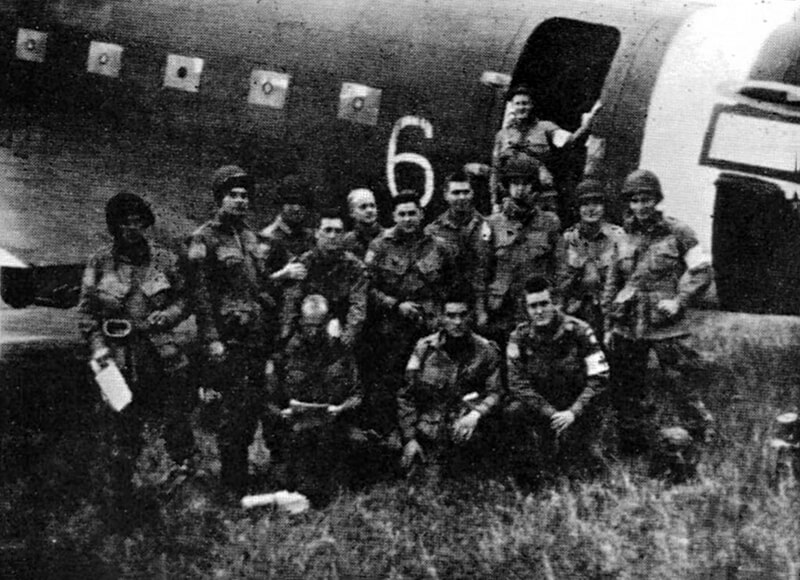
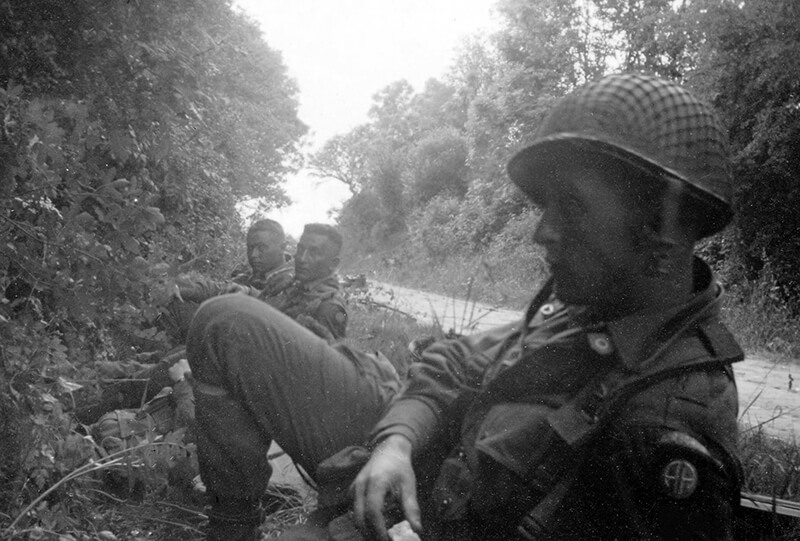
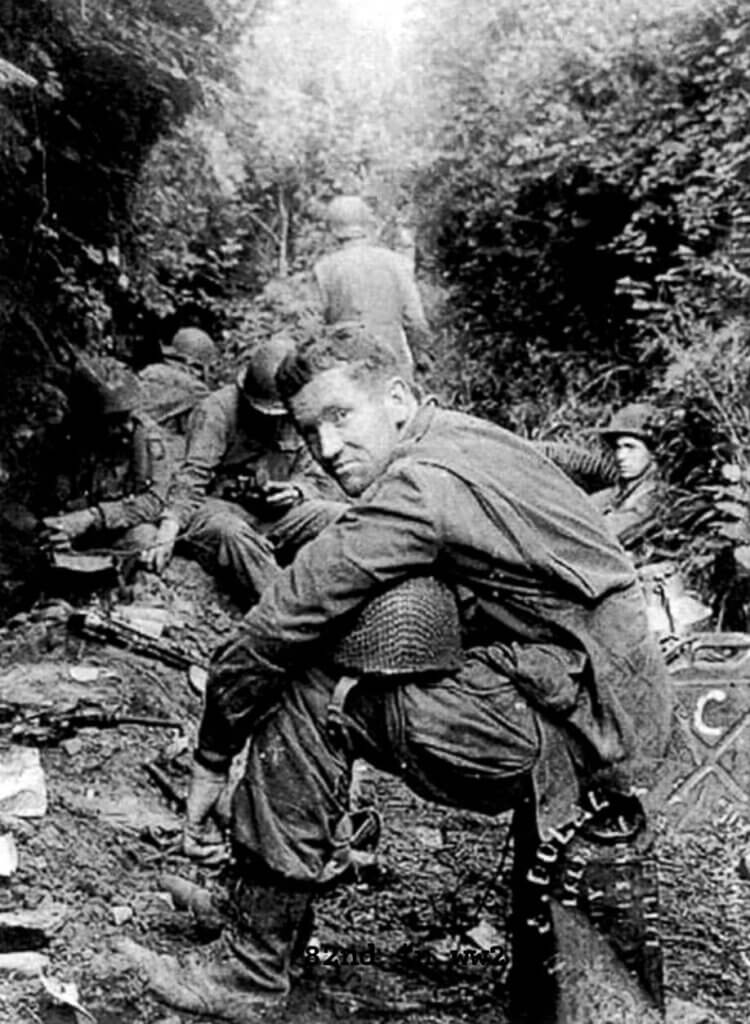
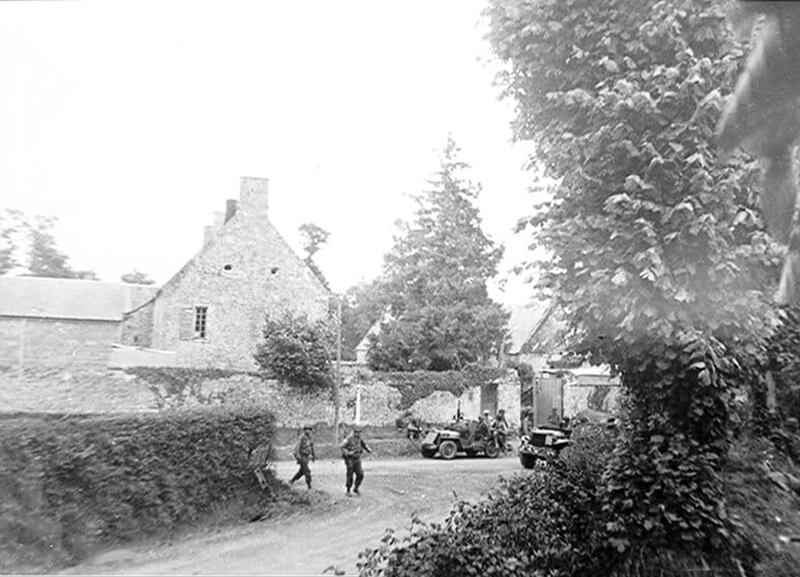
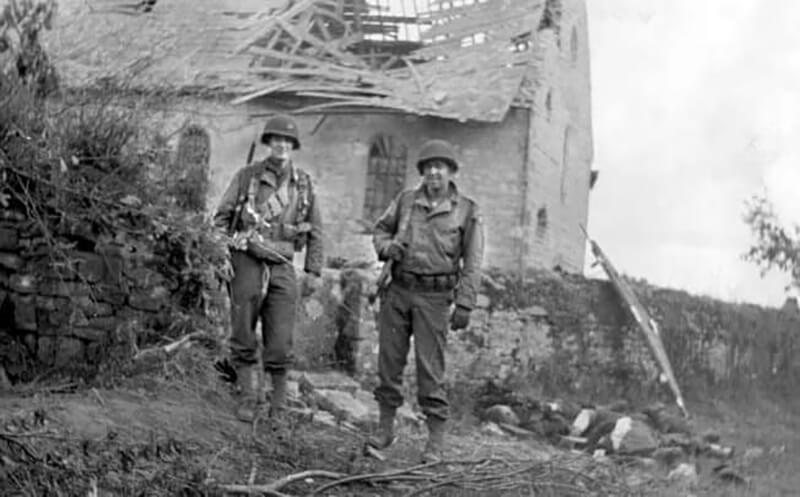
| 508th Parachute Infantry Regiment |
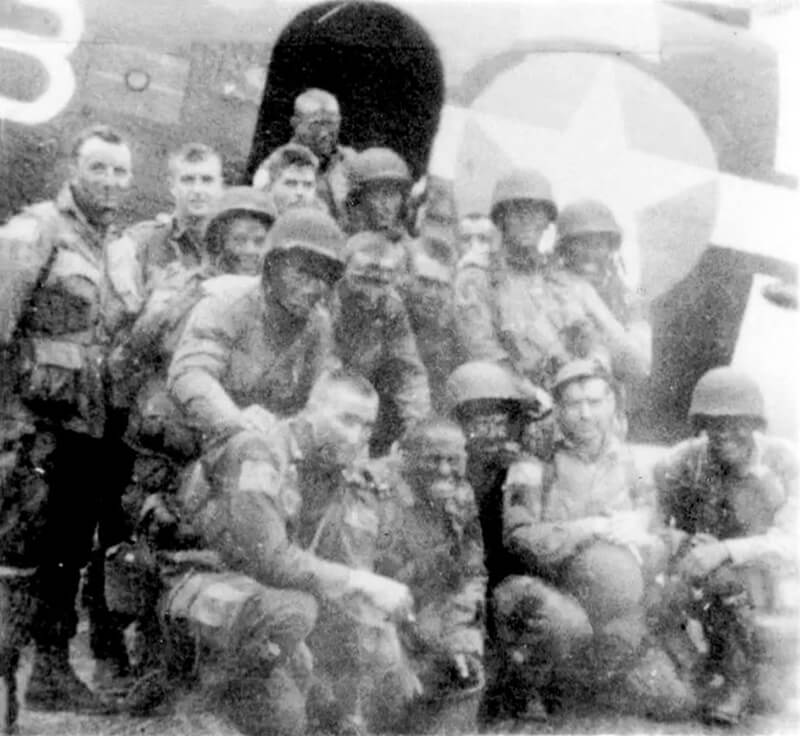
| 307th Airborne Medical Company |
